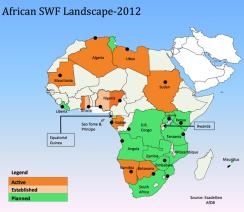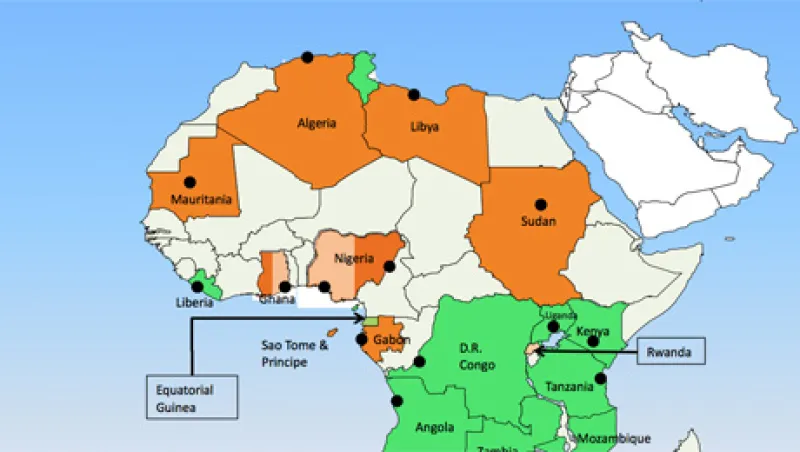I was up way too early this morning for a “webinar” on the ongoing development of sovereign funds in Africa. (By the way, "webinar" is a word I cannot say without cringing. Not a fan.) I was leading a discussion on African SWFs because I believe Africa is the hottest spot in the world when it comes to new sovereign funds (see map below).
In fact, based on some work by one of my bright research assistants here at Stanford (thanks, Isaac), I can say with some confidence that African governments will (attempt to) launch seven new SWFs in 2013. Add these to the eight that have been set up since 2005, and you’ve got a remarkably interesting economic and financial geography taking shape here!
What’s got all of these countries so keen on SWFs, you ask? As I argue with some colleagues in a forthcoming paper (watch this space), SWFs have emerged as development and investment vehicles of choice for many governments in Africa. And SWFs' popularity in Africa stems from the drive to modernize resource revenue management by channeling revenue into professional investment institutions that can either protect and grow the capital base for future public investment or invest directly in new infrastructure projects.
In short, this is a fascinating region on the verge of rapid growth... and SWFs could play an important role in that.
And that's why I’m heading back to Africa in March. I’ll be helping out at Institutional Investor’s Cape Town Roundtable and hope to have interesting conversations with many of the funds below. (And, if you’re curious, this was my report from the last Cape Town meeting). Maybe I'll see you there!







